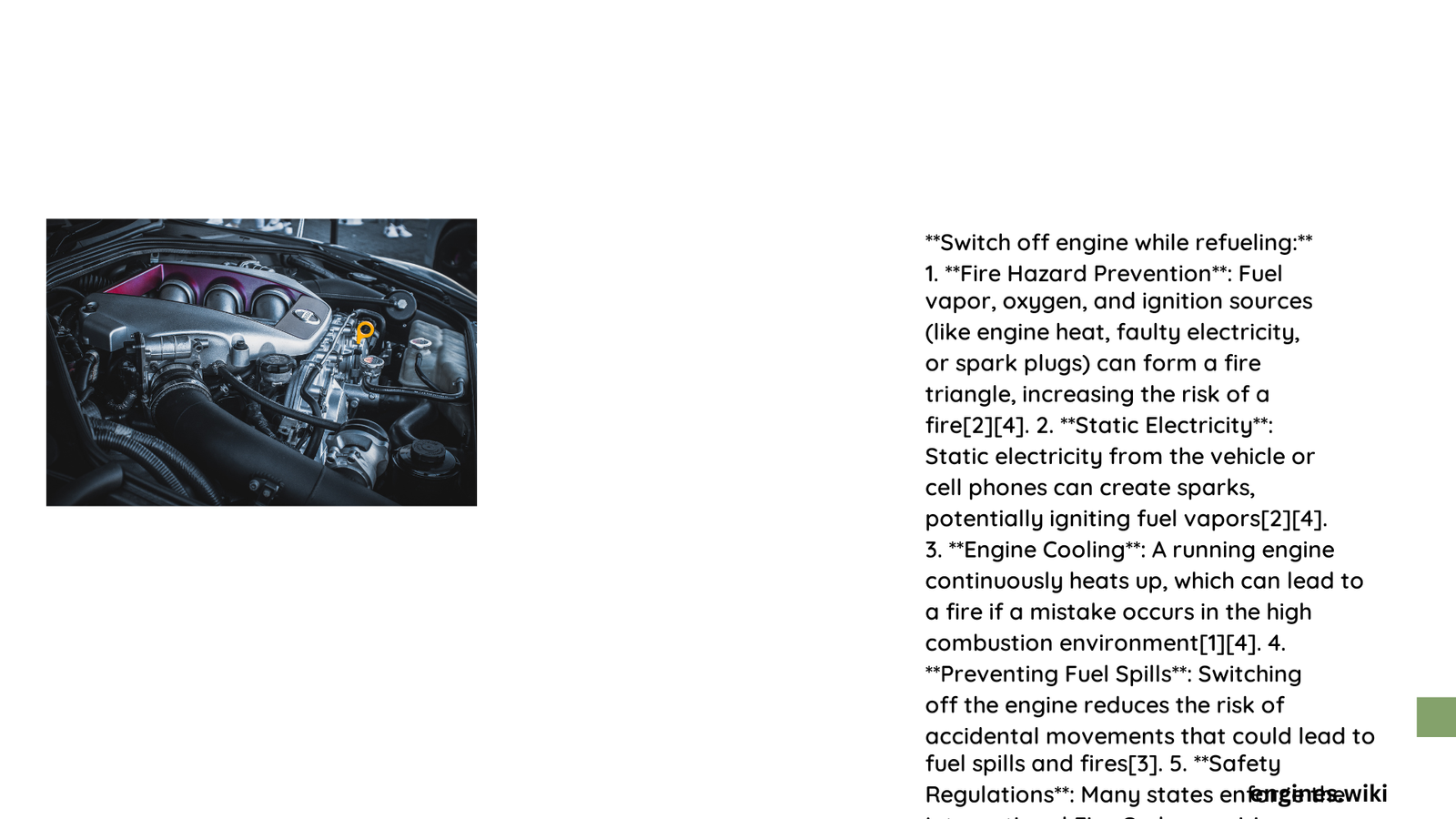Refueling your vehicle requires careful attention to safety protocols. Switching off the engine during fuel filling is a critical practice that prevents potential fire hazards, reduces static electricity risks, and ensures the safety of both the driver and surrounding environment. Understanding the technical and safety implications of engine shutdown during refueling can protect lives and prevent catastrophic incidents.
Why Should You Switch Off the Engine Before Refueling?
What Are the Primary Safety Risks During Refueling?
Vehicle refueling presents multiple potential hazards that necessitate engine shutdown:
- Fire Triangle Risks
- Fuel vapors
- Oxygen presence
-
Potential ignition sources
-
Static Electricity Dangers
- Cool and dry climate conditions increase risk
- Potential spark generation from vehicle components
How Does Engine Heat Contribute to Refueling Risks?
| Risk Factor | Potential Consequence | Mitigation Strategy |
|---|---|---|
| Engine Heat | Fuel vapor ignition | Complete engine shutdown |
| Electrical Systems | Potential spark generation | Disconnect electrical systems |
| Moving Components | Unexpected movement | Engage parking brake |
What Technical Mechanisms Increase Refueling Hazards?
Specific vehicle technical aspects contribute to refueling risks:
- Spark Plug Electrical Discharge
- Potential uncontrolled electrical arcing
- Risk of immediate fuel vapor ignition
- Catalytic Converter Temperature
- Extremely high surface temperatures
- Potential spontaneous combustion risk
What Are Recommended Safe Refueling Practices?

Step-by-Step Safe Refueling Protocol
- Complete Engine Shutdown
- Turn ignition completely off
- Remove key from vehicle
-
Ensure no residual electrical systems remain active
-
Static Electricity Prevention
- Touch metal vehicle part before handling fuel nozzle
- Avoid reentering vehicle during refueling
-
Discharge potential static buildup
-
Environmental Considerations
- Be aware of climate conditions
- Take extra precautions in dry, cool environments
- Maintain constant awareness during fuel transfer
What Statistical Evidence Supports Engine Shutdown?
Research from the Petroleum Equipment Institute reveals:
– Over 150 documented refueling fire incidents
– Majority caused by static electricity interactions
– Significant risk reduction through proper engine shutdown procedures
What Advanced Safety Technologies Exist?
Emerging Safety Innovations
- Automatic Engine Shutdown Systems
- Integrated fire suppression technologies
- Immediate electrical system disconnection
- Smart Fuel Nozzle Designs
- Enhanced static electricity detection
- Automatic fuel flow interruption mechanisms
Professional Recommendations
Automotive and safety experts universally recommend:
– Always switch off engine completely
– Avoid using electronic devices
– Maintain focus during entire refueling process
– Follow specific vehicle manufacturer guidelines
What Legal and Insurance Implications Exist?
- Potential liability for negligence
- Insurance claim complications
- Potential vehicle warranty considerations
Technical Insights for Vehicle Owners
Professional mechanics emphasize that modern vehicles have complex electrical systems requiring careful management during refueling. Understanding your specific vehicle’s characteristics can enhance safety protocols.
Pro Tip: Consult your vehicle’s manual for model-specific refueling guidelines and potential unique considerations.
Reference:
– Petroleum Equipment Institute Safety Guidelines
– National Fire Protection Association Fuel Safety Standards
– Automotive Safety Research Consortium
